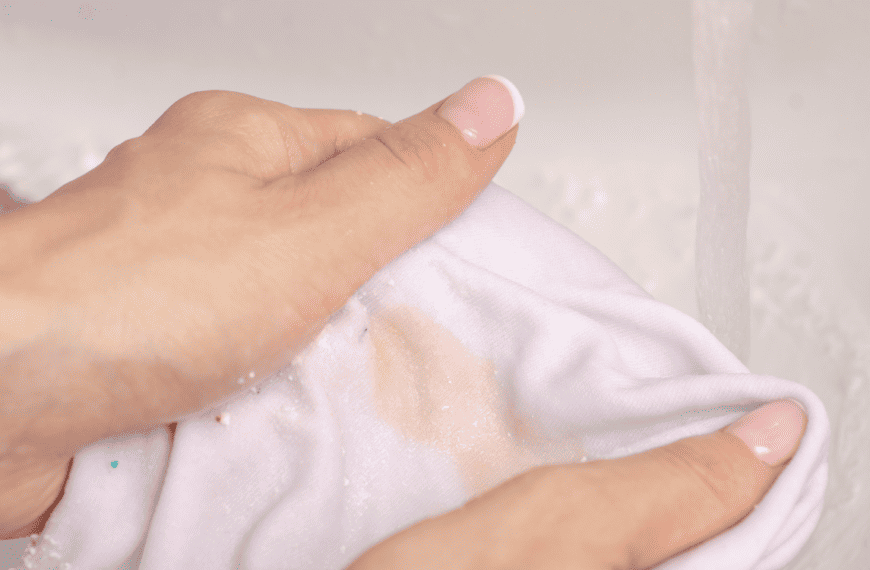Learning how to detect sperm stains helps you treat them properly. You can identify semen stains using black lights, at-home test kits, and more technical testing methods. Black lights are the most popular method, even for the Department of Justice, but there are other options that offer more conclusive results.
Detecting Sperm Stains: Methods and Instructions
A crusty, shiny, or stiff stain that appears gray, off-white, or light yellow might be evidence of ejaculation or sperm. Use the following methods to determine whether the suspected spot is semen ejaculation.
Method 1: Use a Black Light
A black light, also called a Wood’s lamp or UV-A light, produces a blue light that you can use to detect semen. This is because sperm stains typically light up when exposed to the fluorescence of a black light.
This method is simple to execute and hands-off. You can use it on clothing, underwear, bedding, and other surfaces. The ease of use and portability of a UV-A light also make it a top choice for criminal investigators trying to find body fluid.
A UV-A or black light is all you need for this.
Step 1: Turn off the Lights
Start by turning off the lights in the room. It must be dark to see the reaction between the UV-A lamp and the surface with the stain.
Step 2: Power on the Black Light
Turn on the lamp. If you have a flashlight model, simply switch it on. If you have a light bar model, plug it in and power it up.
Step 3: Hold the Black Light over the Stain
Hold your UV-A light over the surface with the suspected semen stain. Point it directly at the affected area. If the dried fluid is sperm, it will light up under the lamp. With most black light lamps, sperm will appear yellow or blue, but it may vary based on the specific lamp you are using.
However, other substances and dried stains from bodily fluids like blood, sweat, saliva, vaginal secretions, and urine also light up under a black light. Even oils from food and cosmetics can glow under UV lights, so the results are not conclusive.
Method 2: DIY Smartphone Blacklight
You can also make a DIY black light with your phone to detect sperm stains on underwear, bedding, and other materials.
Steer clear of black light phone apps because they simulate a black light, but they do not mimic the actual effects of a black light.
What you’ll need:
- Smartphone with a flashlight feature
- Transparent tape
- Blue permanent marker
- Purple permanent marker
Step 1: Place Tape Over Your Phone’s Camera Light and Color
Stick a strip of tape over the camera light on your phone. Then, color the tape with a blue permanent marker.
Step 2: Repeat
Layer another piece of tape over the first. Again, color it blue.
Step 3: Add a Third Layer of Tape and Color
Add another layer of tape. This time, color it with a purple permanent marker.
Step 4: Hold the Camera Light Over the Stain
Now that your DIY black light is ready, turn on your phone’s camera light. Point it to where you detected a stain. If the residue is semen, it will light up and look yellow or blue.
Method 3: At-Home Semen Detection Kit
At-home semen detection kits come in two simple-to-use varieties. They use a test strip to detect small amounts of sperm on underwear, bedding, hard surfaces, and more.
Here is a vide on how you do it:
An AP semen detection kit tests fabric for acid phosphatase (AP), an enzyme in sperm and vaginal stains. While this type of test can detect sperm, it is not conclusive because AP is also present in other bodily fluids.
You can also use a Prostate Specific Antigen (PSA) test to refine the results, but this isn’t completely conclusive either.
What you’ll need:
- Home test kit (we recommend Semen Detection Test Strips or Check Mate Infidelity Test Kit)
- Water (room temperature)
Step 1: Swab the Stain
Open your sperm detection kit and read through the instructions. While each test is slightly different, most follow the same procedure.
Moisten the included swab with water and rub it on the crusty residue of the suspected semen stain. Continue rubbing for at least 15 seconds to ensure the stain transfers to the swab.
Step 2: Apply the Swab to the Test Strip
Open the test strip packaging to expose the sticky tape. Place the swab on the test strip before it dries out.
Step 3: Wait for the Results
If sperm is detected, the test strip will change color in about 15 seconds.
However, read the instructions for your kit carefully to determine the correct color for sperm. The test could change to other colors when left for longer than the recommended time to signal the presence of other body fluids.
Method 4: The Most Conclusive Tests
If you require a more confirmatory test, you have a couple of options that identify body fluids with chemical testing. However, these conclusive tests are more expensive and take longer to get results.
One option is an RSID-Semen test. It uses test strips to analyze fluid samples from surfaces like bedding, clothing, and prophylactics.
Your other option is Christmas tree staining. It stains the heads and tails of sperm so it can be easily spotted and differentiated from other cells under a microscope.
Why Does Semen Glow in the Dark?
While sperm or seminal fluid does not produce a glow, its particular mix of chemicals does fluoresce under a black light. The glow you see is caused by semen absorbing UV light and re-emitting the energy as visible light.
What Color Are Sperm Stains?
Dried sperm stains feel stiff and are pale gray, off-white, or light yellow to the naked eye. The variation is typically caused by the color of the materials where the suspected stain is found. In addition, semen could appear more white when fresh.
How Long Can Sperm Be Detected on Clothes?
Several variables, like medical conditions, affect the longevity of potential semen stain detection. However, under the right circumstances, you can detect the presence of male semen for longer than a year. Sperm is highly stable, making it simple to spot and test.
Are Sperm Stains Permanent?
Similar to other bodily fluids, dried semen stains can be permanent on clothes and fabric if washed with anything other than cold water. Higher temperatures are likely to coagulate protein found in semen, which leads to the stain setting into the fabric and potentially causing a permanent stain.
Detecting Semen Stains and Body Fluids Made Easy
Now that you know the different ways on how to detect sperm stains, we recommend that you start with the DIY method first then try the in-home test kit if you really feel like you need something more definitive.
Remember, while UV-A lights are simple, other, more accurate methods exist. Other body fluids, blood, foods, oils, cosmetics, and pet stains can produce the same glowing effect under a black light. With this in mind, an at-home testing kit may be the most reliable and convenient option.









